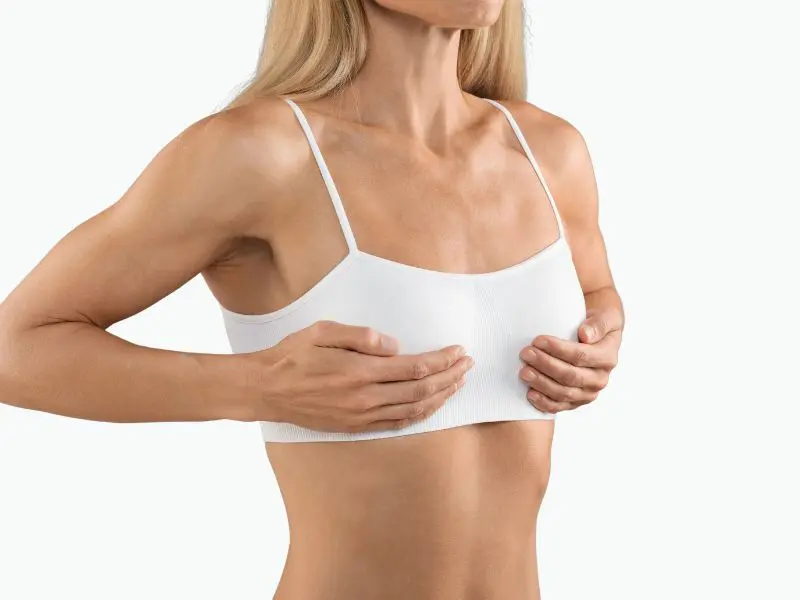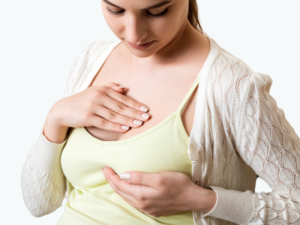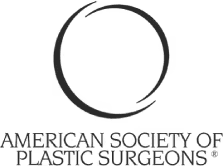BREAST LIFT
Understanding Fat Transfer Breast Augmentation: What You Need to Know

Fat transfer breast augmentation represents a modern and natural approach to enhancing breast size and shape. Unlike traditional breast implants, this procedure utilises the body’s own fat cells to achieve subtle and personalized results.
In this blog, we’ll explore fat transfer breast augmentation, including its process, benefits, and considerations.
What is Fat Transfer Breast Augmentation: An Overview
Fat transfer breast augmentation is a surgical technique used to enhance the size and shape of the breasts using the patient’s own fat cells.
During the procedure, through liposuction, fat is suctioned from areas of the body where it is abundant, such as the abdomen, thighs, or buttocks. Following extraction, the fat is purified and processed before being meticulously injected into the breast region to achieve the desired shape and volume.
Benefits of Fat Transfer Breast Augmentation
Fat transfer breast augmentation offers several potential benefits compared to traditional breast implants:
- Natural look and feel: Using the patient’s tissue results in a more natural appearance and texture than implants.
- Dual benefit: In addition to augmenting the breasts, fat transfer allows for body contouring through liposuction of donor areas. This can result in improved overall body proportions and symmetry.
- Minimal scarring: Small incisions for fat harvesting and injection points result in minimal scarring.
- Lower risk of complications: There is a reduced risk of certain complications associated with breast implants, such as implant rupture, capsular contracture, or implant-related infections.
It’s important to consult a board-certified plastic surgeon to evaluate if fat transfer breast augmentation is suitable for you, considering your aesthetic goals, medical history, and anatomy.
Candidate for Fat Transfer Breast Augmentation
To be an ideal candidate for the procedure, you’ll need to:
- Be in overall good health.
- Be 18 years or older.
- Not smoke or can quit smoking weeks before the procedure.
- Just looking for a cup size increase in breast.
- Have enough available fat to achieve your desired results.
- Have enough breast volume to receive that fat.
- Don’t plan to get pregnant or lose weight in the future.
- Have realistic expectations about the outcome.
Before undergoing fat transfer breast augmentation, consult a board-certified plastic surgeon, who can evaluate your candidacy based on your individual circumstances and aesthetic goals.
Fat Transfer Breast Augmentation Procedure
The breast augmentation through fat transfer procedure typically involves several steps:
Consultation and Pre-Operative Preparation:
The process begins with a consultation with a plastic surgeon, who will conduct a medical history evaluation, discuss your goals and expectations, and assess whether you are a suitable candidate for the procedure.
You will also undergo a thorough pre-operative evaluation, which may include medical tests and measurements of the breasts and body areas from which fat will be harvested.
During the Procedure:
The fat transfer breast augmentation procedure is usually performed under anaesthesia to ensure the comfort and safety of the patient during the procedure.
- Fat Harvest: The surgeon will use liposuction techniques to extract fat from donor areas of the body, such as the abdomen, thighs, or buttocks. Small incisions are made in the donor areas, and a thin cannula is used to suction out the fat.
- Purification: After harvesting, it is processed and purified using specialized techniques to prepare it for injection into the breasts. This involves centrifugation or filtration to separate the fat cells from other components, like blood and oil.
- Transfer and Injection: The purified fat is injected into the breasts using small, strategically placed incisions. The surgeon will carefully layer the fat within the tissue of the breasts to achieve the desired volume and contour. Multiple injections may be performed to ensure even distribution and optimal results.
What to Expect: Fat Transfer Breast Augmentation Recovery
Here’s what you can generally expect during the fat transfer breast augmentation recovery process:
- Post-surgery, you will spend some time in the recovery area under observation. Once you are awake and stable, you will be allowed to return home.
- During the first few days after surgery, you may experience some discomfort, swelling, bruising, and mild to moderate pain in both the donor sites (where fat was harvested) and the breasts. Your surgeon will prescribe pain relievers to help manage any discomfort.
- You will be advised to avoid participating in strenuous activities for several weeks post-surgery.
- You will wear compression garments or a supportive bra to reduce swelling and provide support to the breasts and donor areas.
- Sleep on your back or side to avoid putting pressure on your breasts for at least the first month.
By following these precautions and guidelines, you can promote a smooth and successful recovery from fat transfer breast augmentation and enjoy optimal results.
Results
Fat transfer breast augmentation offers long-term results, typically considered permanent. However, maintaining a healthy lifestyle is vital for sustaining these results.
The transferred fat cells integrate into surrounding tissue and should remain stable for several years. It’s important to note that natural body changes and weight fluctuations can affect breast appearance over time.
Protecting the breasts from environmental factors and attending regular follow-up appointments can help ensure sustained results.
Fat Transfer Breast Augmentation Complications
Fat transfer breast augmentation is safe, but like all surgery, it comes with potential risks:
- Infection
- Bleeding
- Persistent pain
- Formation of lumps or cysts in breasts
- Not obtaining the desired size or aesthetics
- Temporary or permanent changes in nipple sensation
Discussing these risks and complications with a qualified surgeon is essential before undergoing fat transfer breast augmentation. Following pre-operative and post-operative instructions can also help mitigate these risks and optimise outcomes.
Consult Dr Faisal Salim for Fat Transfer Breast Augmentation
Fat transfer breast augmentation offers a natural and minimally invasive option for enhancing breast size and shape while providing the added benefit of body contouring in donor areas.
For personalized care and outstanding fat transfer breast augmentation results in Dubai, consult Dr Faisal Salim. He believes in treating each patient as unique and deserving of personalized care. With his experience, skill, and dedication to understanding each patient’s individual needs and goals, Dr Faisal ensures a comfortable, satisfying, and safe experience throughout the treatment process.
Contact Dr Faisal Salim today to begin your journey to enhanced confidence and beauty.
FAQ
Final results from fat transfer breast augmentation typically become apparent within a few months as swelling resolves, with optimal outcomes usually visible around six months post-surgery. However, some subtle changes may continue to occur over time.
During fat transfer breast augmentation, you won’t experience pain as you’ll receive either local or general anaesthesia. However, you may feel sore in the weeks following the operation, but you’ll be given pain medication to help manage this.
Recovery from breast augmentation through fat transfer typically takes 1-2 weeks for initial healing, with full recovery and final results often achieved within 4-6 weeks.








